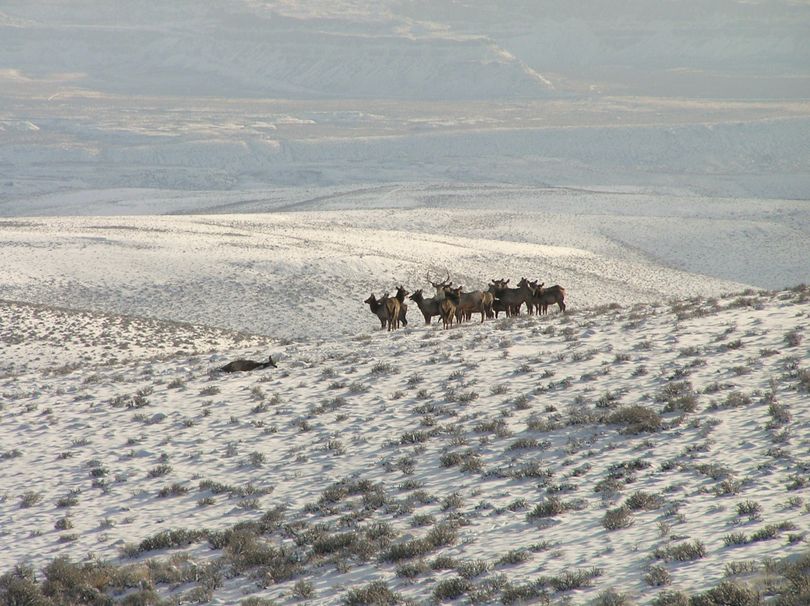Legislature directs agencies to keep elk off I-90

WILDLIFE -- A Washington Legislature bill directing state departments to look into methods of deterring elk from Interstate 90 in Kittitas County was signed into law last week.
The law directs the Washington Department of Fish and Wildlife and the Washington State Department of Transportation to look for ways to reduce traffic collisions involving elk. Rep. Tom Dent, R-Moses Lake, was the sponsor of the bill.
“There are too many of them, that is why they’re on the highways,” said Dent. “They don’t have enough to eat.”
It's another example of how human development is curbing the potential grown of the region's elk herds.
Here's more from the Yakima Herald-Republic:
The Colockum herd is about 6,500 elk and Fish and Wildlife recommends the herd be reduced to about 4,500, he said. Last year, more than 60 elk were killed in collisions on Vantage hill. A woman was injured in April after her car collided with two elk in the road on Interstate 82 near Ellensburg.
The large herd size has created a shortage of forage material, causing the elk to roam farther looking for food.
The bill directs the agencies to conduct an elk management pilot project. The pilot project would increase hunting, establish a permitting mechanism to allow a person to feed elk by permit only, and use livestock grazing to attract elk away from roads and private property.
Dent said the elk are getting into farmers’ hay crops and barns, causing damage.
“The timothy (hay) there is a product that for the most part is exported,” Dent said. “But if an elk takes a bite out of a bale of timothy, it is no longer eligible for export.”
Some possible solutions include finding more suitable locations for the elk in the winter and increasing grass suitable for forage, he said.
“When they don’t graze land, that grass gets pretty hard and nothing will eat it,” Dent said. “So we’re directing them to look at more grazing at the grounds they manage.”
The department is also considering adding hunting permits for elk, he said. There are around 300 permits for elk hunting in Kittitas County.
